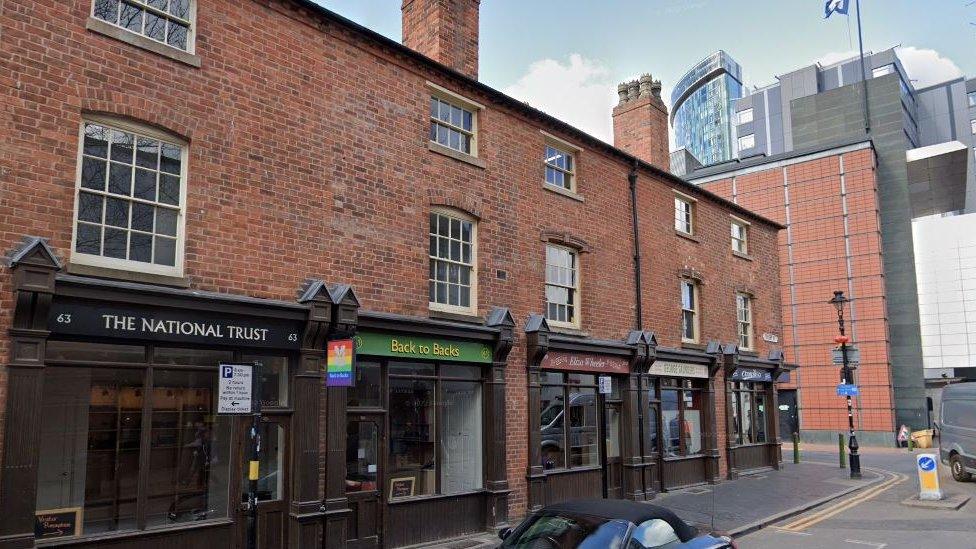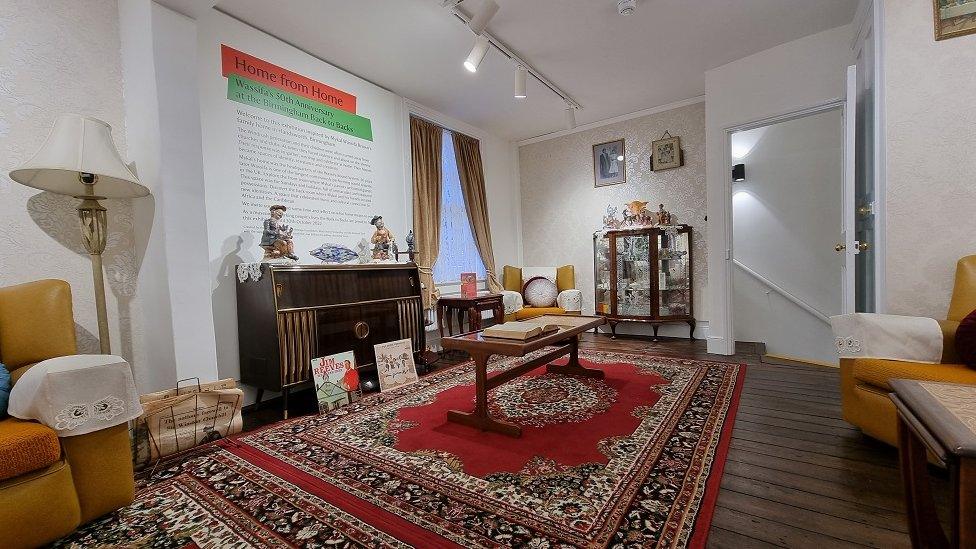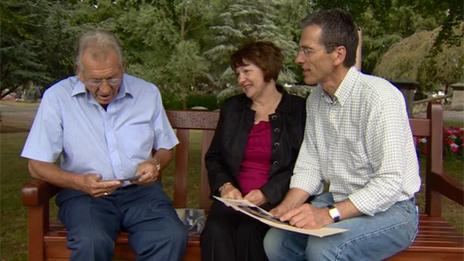Exhibitions confront Birmingham's Commonwealth ties
- Published

The exhibitions are being displayed at the Birmingham Back to Backs
Two exhibitions are set to tell the story of Birmingham's Commonwealth ties as the city hosts the 2022 Games.
The exhibitions are being hosted by the National Trust's Back to Backs, one of the only surviving examples of back-to-back housing in the UK.
They tell stories of children in poverty being sent to Canada as well as exploring how the Windrush generation created their identities in the city.
A history group said the Games were an opportunity to explore the connections.
The Lost Children exhibition is dedicated to exploring the so-called Middlemore Homes.
Between 1873 and 1952, the scheme saw children suffering neglect and extreme poverty sent via the Birmingham's Middlemore Emigration Home to Australia and Canada.

Back to backs were houses built literally back-to-back around a communal courtyard
It was established by John Middlemore and often parents gave consent for their children to be removed from their desperate circumstances.
About 6,000 children were sent from Birmingham to "a better life" abroad.
In February 2010, then prime minister Gordon Brown apologised for the UK's role in the scheme, during which thousands of children suffered abuse.
The exhibition shares their stories though photos, letters and other documents.
"There are stories of great sadness but also stories of great success," said Val Hart, from Balsall Heath Local History Society.
"The Commonwealth Games are a fantastic opportunity to share the stories of the deep, personal connection between Birmingham and Canada."

Home from Home explores how the Windrush generation made their own identity in Birmingham
The second exhibition, Home from Home, explores ideas around identity by replicating musician Mykal Brown's childhood home in Handsworth.
"It's about presenting objects that we grew up with which are the same as what other families and cultures would have," Mr Brown said.
"I hope people visit and recognise things their parents or grandparents used to have at home as well as experiencing our culture and stories."
The front room explores how the Windrush generation made their own identity in Birmingham when they emigrated from Jamaica while the back room explores the emergence of Black British youth culture.
"Both exhibitions highlight working-class stories from Birmingham and give visitors the opportunity to learn more about our brilliant city," said Ashton Cartmell, from Birmingham Back to Backs.
The exhibitions will be at the museum on Hurst Street until the end of October.

Follow BBC West Midlands on Facebook, external, Twitter, external and Instagram, external. Send your story ideas to: newsonline.westmidlands@bbc.co.uk, external
Related topics
- Published31 October 2011
